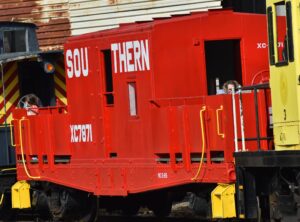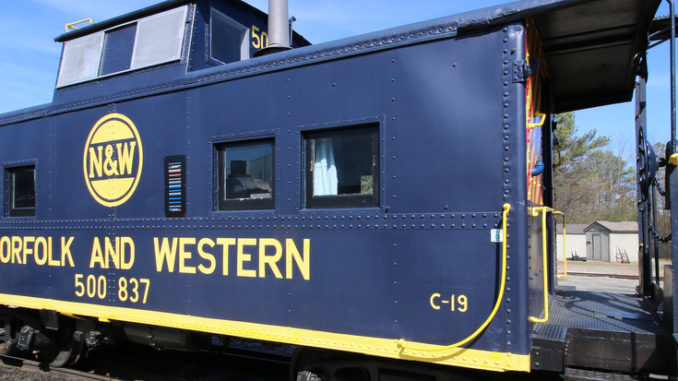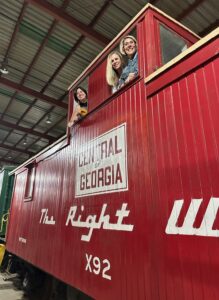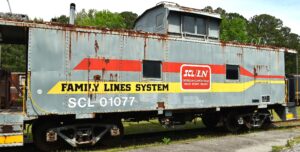

X-92 – Caboose – Central of Georgia
This wood constructed unit was built in 1916 as a ventilated box car. It was converted to a caboose in 1942 by Central of Georgia’s shops. It was donated in 1970. You'll find X-92 in our Building 1. It's a great place to have your picture taken!

01077 – Caboose – Seaboard Coast Line
This steel class M6 caboose was rebuilt in 1970 and donated in 1997. The main components of the Family Lines (a marketing stance) were the Louisville & Nashville, the Clinchfield, and the Seaboard Coastline. Basically intact, the car can usually be seen on the end of a short freight train on our Track 14 and can be open for touring on occasion.

- Status: Open and 0n exhibit
2156 – Caboose – Southern Railway
This is a wood caboose built in 1915 by Southern Railway. It was last used in service by Vulcan Materials, and was donated to the Museum in 1979.
- In storage.
2866 – Caboose – Georgia Railroad
- Open and on exhibit near the buses.
2489 Caboose – Georgia Railroad
This caboose was built during the WWII steel shortage by the Georgia Railroad’s shops. The frame and ends are from an otherwise rusted-out 1923 boxcar, with 2′ x 6′ boards attached to the inside of the frame. It was donated in 1972.
- In storage
